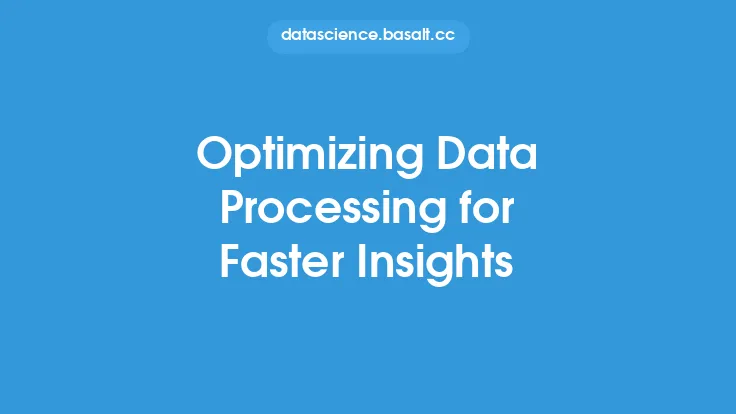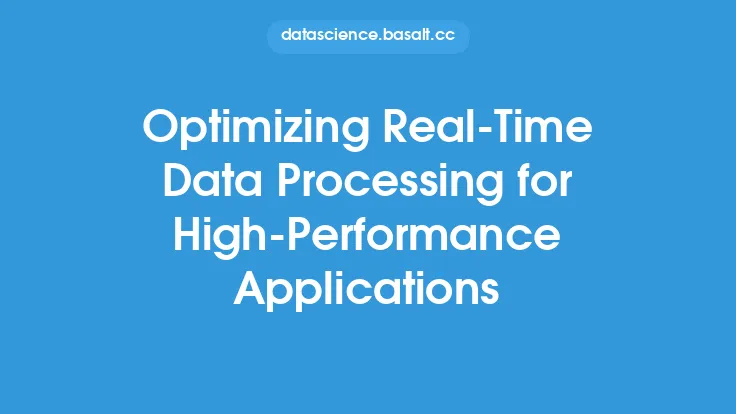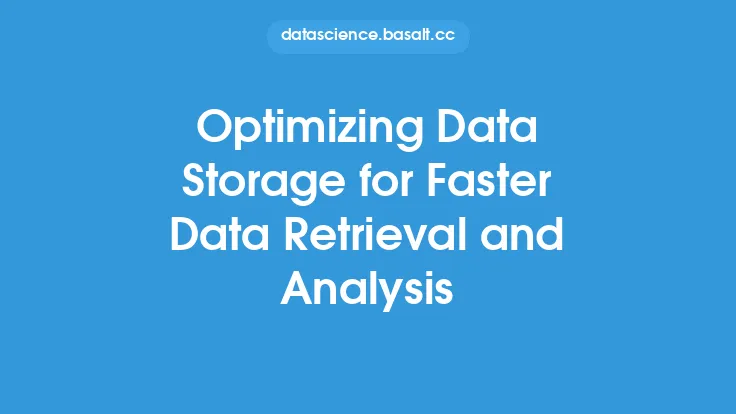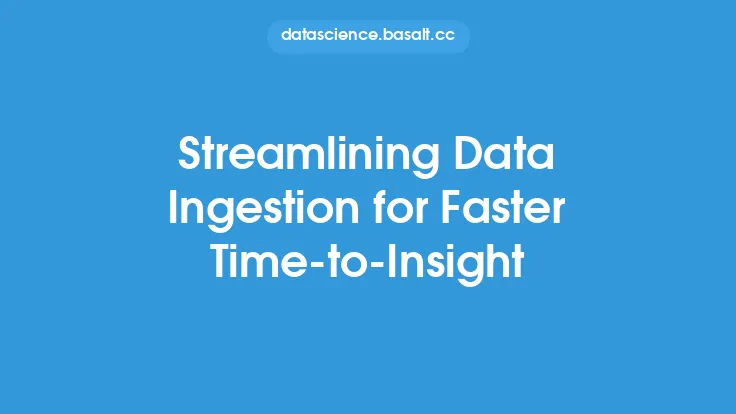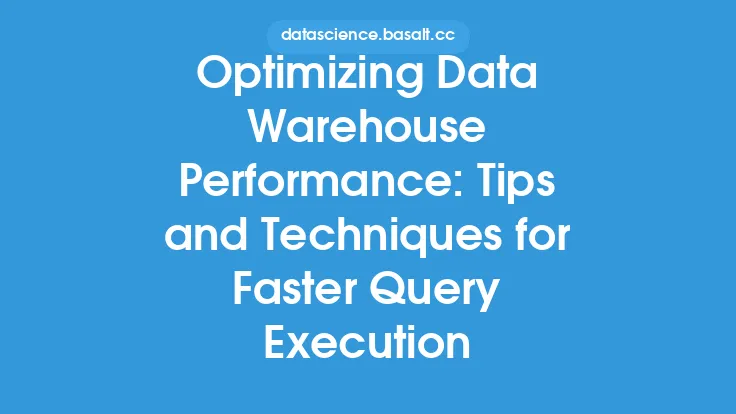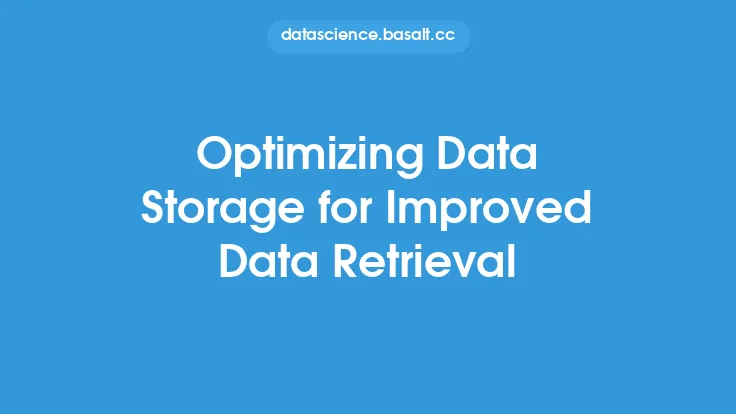Data pipeline performance is a critical aspect of data engineering, as it directly impacts the speed and accuracy of insights that can be derived from data. A well-optimized data pipeline can significantly reduce the time it takes to process and analyze data, enabling businesses to make informed decisions faster. In this article, we will delve into the key factors that affect data pipeline performance and provide guidance on how to optimize them for faster insights.
Understanding Data Pipeline Performance
Data pipeline performance refers to the efficiency and speed at which data is processed, transformed, and loaded into a target system. It is measured by metrics such as throughput, latency, and processing time. Throughput refers to the amount of data that can be processed per unit of time, while latency refers to the time it takes for data to be processed and become available for analysis. Processing time, on the other hand, refers to the time it takes for data to be transformed and loaded into a target system.
Several factors can impact data pipeline performance, including data volume, data complexity, processing power, memory, and network bandwidth. As data volumes continue to grow, data pipelines must be designed to handle large amounts of data without compromising performance. Data complexity, such as data format and structure, can also impact performance, as more complex data may require additional processing power and memory.
Data Pipeline Architecture
A well-designed data pipeline architecture is essential for optimal performance. A data pipeline typically consists of several components, including data ingestion, data processing, data transformation, and data loading. Each component must be designed to handle the specific requirements of the data pipeline, taking into account factors such as data volume, data complexity, and processing power.
Data ingestion refers to the process of collecting data from various sources, such as logs, sensors, or social media. This data is then processed and transformed into a format that can be analyzed. Data processing involves cleaning, filtering, and aggregating data, while data transformation involves converting data into a format that can be loaded into a target system. Finally, data loading involves loading the transformed data into a target system, such as a data warehouse or data lake.
Optimizing Data Ingestion
Data ingestion is a critical component of a data pipeline, as it directly impacts the quality and accuracy of the data. To optimize data ingestion, several strategies can be employed, including batch processing, stream processing, and data compression. Batch processing involves processing data in batches, rather than in real-time, which can help reduce the load on the data pipeline. Stream processing, on the other hand, involves processing data in real-time, which can provide faster insights but may require additional processing power.
Data compression can also help optimize data ingestion by reducing the amount of data that needs to be processed and transmitted. This can be achieved using algorithms such as gzip or snappy, which can compress data without compromising its quality. Additionally, data ingestion can be optimized by using distributed systems, such as Apache Kafka or Amazon Kinesis, which can handle large amounts of data and provide fault-tolerant and scalable data ingestion.
Optimizing Data Processing
Data processing is another critical component of a data pipeline, as it directly impacts the accuracy and quality of the insights that can be derived from the data. To optimize data processing, several strategies can be employed, including parallel processing, distributed processing, and caching. Parallel processing involves processing data in parallel, using multiple processors or cores, which can significantly reduce processing time.
Distributed processing involves processing data across multiple machines or nodes, which can provide scalable and fault-tolerant data processing. Caching, on the other hand, involves storing frequently accessed data in memory, which can reduce the time it takes to access and process data. Additionally, data processing can be optimized by using optimized algorithms and data structures, such as Apache Spark or Apache Flink, which can provide efficient and scalable data processing.
Optimizing Data Storage
Data storage is a critical component of a data pipeline, as it directly impacts the performance and scalability of the pipeline. To optimize data storage, several strategies can be employed, including data partitioning, data indexing, and data compression. Data partitioning involves dividing data into smaller partitions, which can improve query performance and reduce storage costs.
Data indexing involves creating indexes on data, which can improve query performance and reduce the time it takes to access data. Data compression, on the other hand, involves compressing data to reduce storage costs and improve data transfer times. Additionally, data storage can be optimized by using optimized storage systems, such as Apache HBase or Amazon S3, which can provide scalable and fault-tolerant data storage.
Monitoring and Troubleshooting
Monitoring and troubleshooting are critical aspects of data pipeline performance, as they enable data engineers to identify and resolve issues quickly. To monitor data pipeline performance, several metrics can be used, including throughput, latency, and processing time. These metrics can be monitored using tools such as Apache Airflow, Apache Spark, or Prometheus, which can provide real-time monitoring and alerting.
Troubleshooting data pipeline issues can be challenging, but several strategies can be employed, including log analysis, data profiling, and data validation. Log analysis involves analyzing logs to identify issues and errors, while data profiling involves analyzing data to identify quality issues and anomalies. Data validation, on the other hand, involves validating data to ensure it meets the required quality and accuracy standards.
Conclusion
Optimizing data pipeline performance is critical for faster insights and better decision-making. By understanding the key factors that impact data pipeline performance, designing a well-optimized data pipeline architecture, and employing strategies to optimize data ingestion, processing, and storage, data engineers can significantly improve the performance and scalability of their data pipelines. Additionally, monitoring and troubleshooting data pipeline issues can help identify and resolve issues quickly, ensuring that data pipelines continue to perform optimally. By following these best practices and strategies, businesses can unlock the full potential of their data and make informed decisions faster.
